

In-memory computing is an emerging computing paradigm that overcomes the limitations of exiting Von-Neumann computing architectures such as the memory-wall bottleneck. In such paradigm, the computations are performed directly on the data stored in the memory, which highly reduces the memory-processor communications during computation. Hence, significant speedup and energy savings could be achieved especially with data-intensive applications. Associative processors (APs) were proposed in the seventies and recently were revived thanks to the high-density memories. In this tutorial brief, we
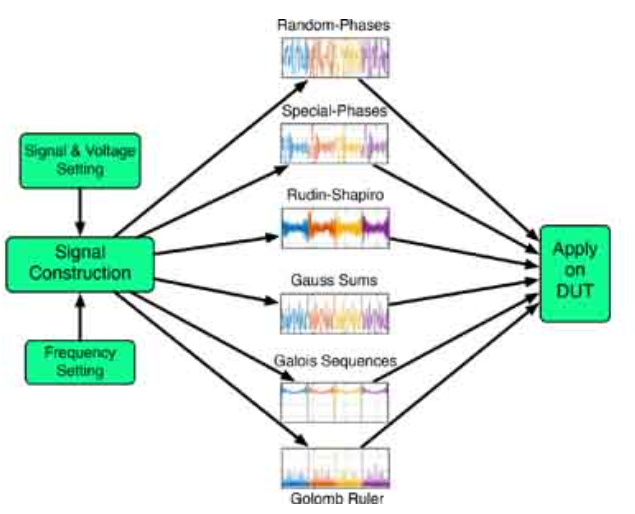
In this work, we generate and use a total of six different wideband signals for joint time-frequency characterization of nonlinear time-invariant [N-shaped differential resistor (NDR)] and linear time-varying (thermistor) circuits. A data acquisition board is used for applying the signals in the form of a voltage excitation and reading the induced current. The input signals have flat power spectra, thus avoiding the need for iterative calibration loops required to obtain signals with low crest factor. Such iterative loops are unavoidable when using random, pseudorandom, or chaotic signals all
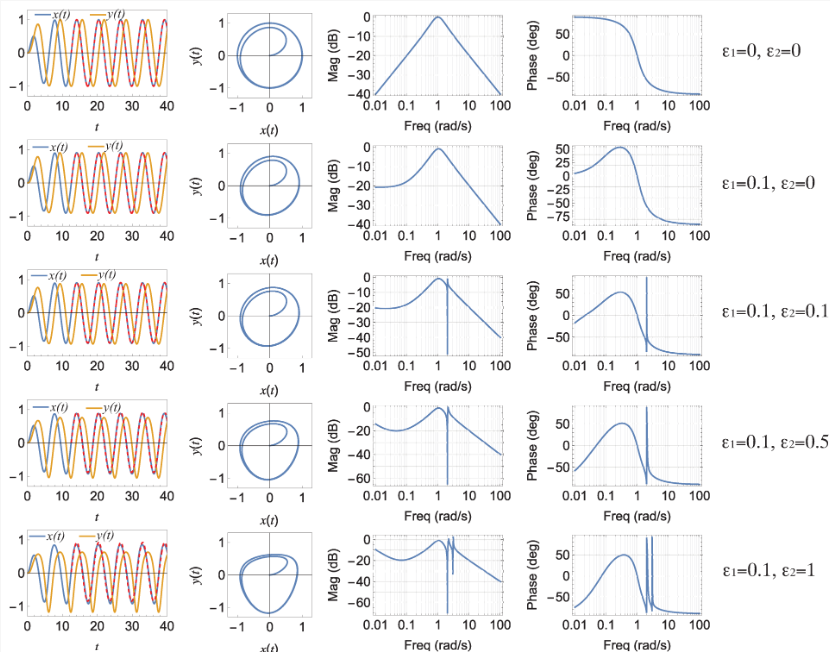
In this work, we explore the behavior of a classical RLC resonance-based bandpass filter, which includes two resistors (one of which is associated with a non-ideal inductor), when either of these resistors is self voltage-controlled. In particular, self-feedback control is achieved by using the voltage developed across the inductor or the capacitor to dynamically change the value of the controlled resistor. This results in a multiplication-type non-linearity, which transforms the linear filter into a non-linear filter described by a set of non-linear differential equations. When gradually
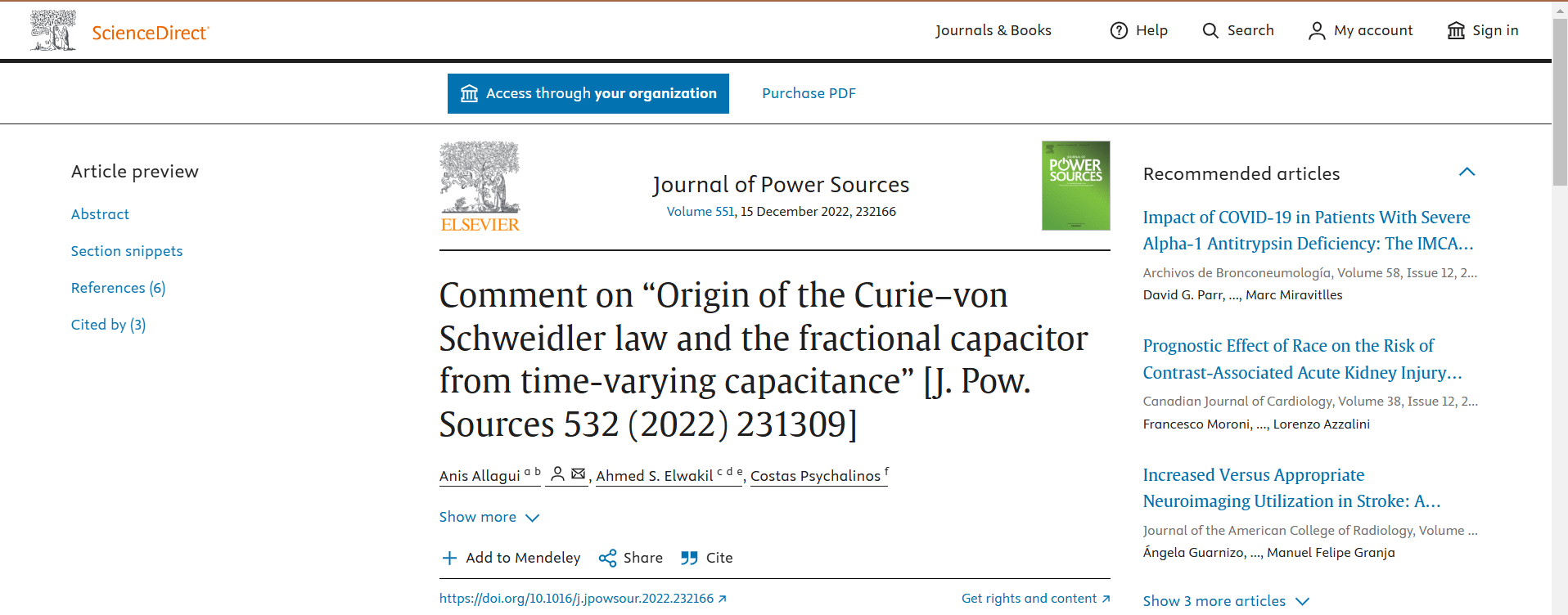
In this Letter we highlight some fundamental errors in the paper “Origin of the Curie–von Schweidler law and the fractional capacitor from time-varying capacitance” [J. Pow. Sources 532 (2022) 231309] by V. Pandey. In particular, with the use of the convolution integral of linear time-varying capacitance with the time-derivative of voltage (i.e. Eq (9) as suggested by the author), one ends up with step voltage function generating a constant current on a capacitive device, which is not true. We also question that a step voltage results in zero charge according to the r.h.s. of Eq. (9), but in
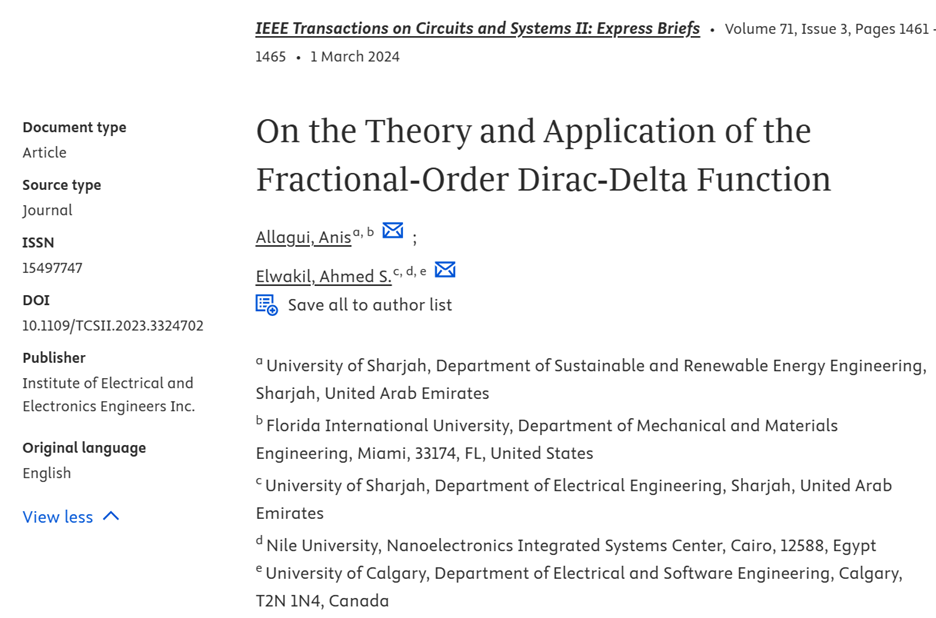
In this brief, we study a generalized fractional-order Dirac delta function defined using the M-Wright function Mα (t). The function Mα (t) is the inverse Laplace transform of the single- parameter Mittag-Leffler function Eα (−s), which itself can be viewed as the fractional-order generalization of the exponential function for 0
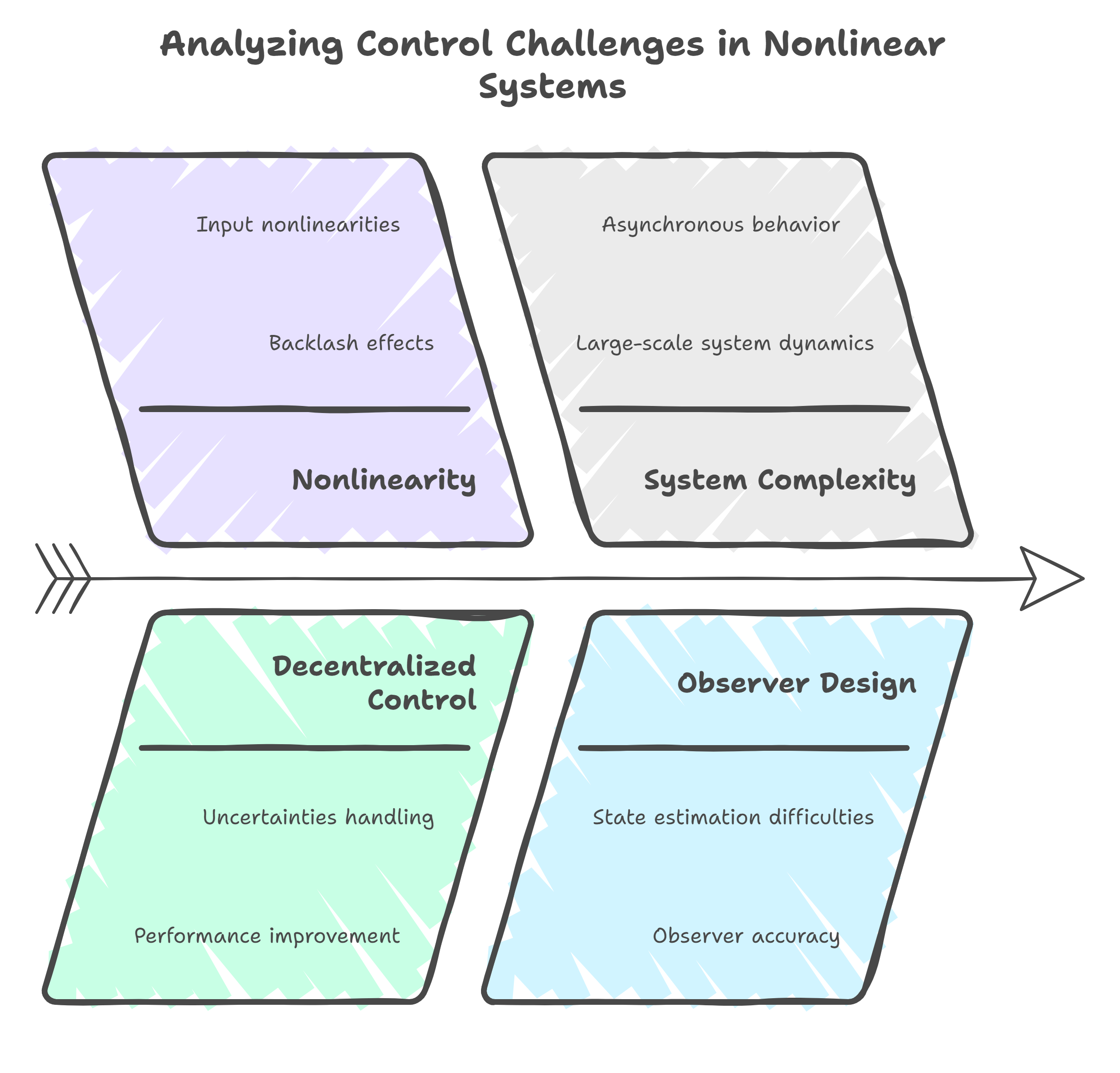
In this article an adaptive decentralised sliding mode controller and observer for asynchronous nonlinear large-scale systems with backlash is proposed. In the literature, only the synchronous case for input nonlinearities such as dead-zone and saturation is found. In this article, the asynchronous case for systems with backlash is studied considering the backlash effect. Owing to the complexity of the backlash nonlinearity, an adaptive decentralised controller is proposed because of the capability of this strategy to deal with uncertainties and to improve the system performance when this
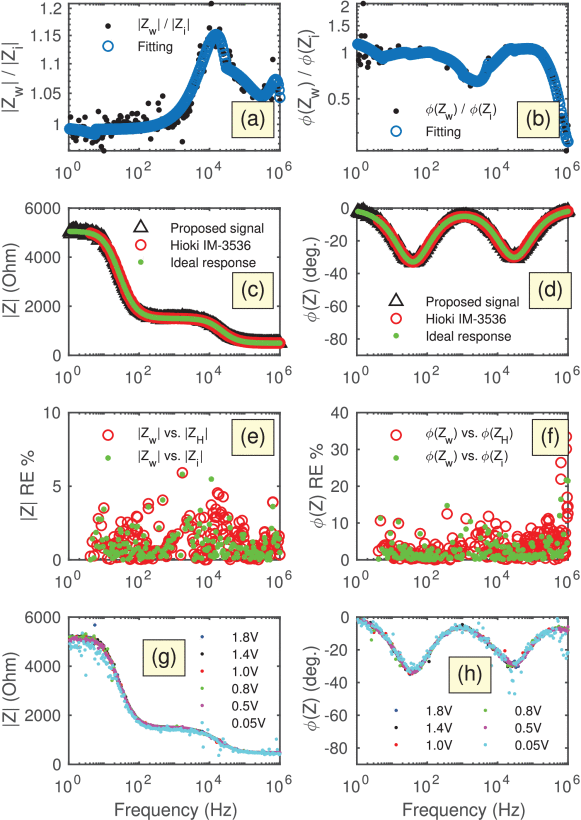
Impedance spectroscopy has become a standard electroanalytical technique to study (bio)electrochemical and physiological systems. From an instrumentation point of view, the measurement of impedance can be carried out either in the frequency domain using the classical frequency sweep method or in the time domain using a variety of broadband signals. While time-domain techniques can be implemented with relatively simple hardware and can achieve faster acquisition time, they are still not that popular because of their lower accuracy and modularity. In this work we present a method and an
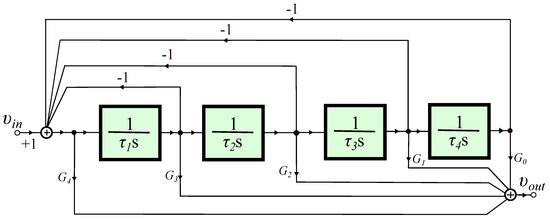
Fractional-order Butterworth filters of order 1 + (Formula presented.) (0
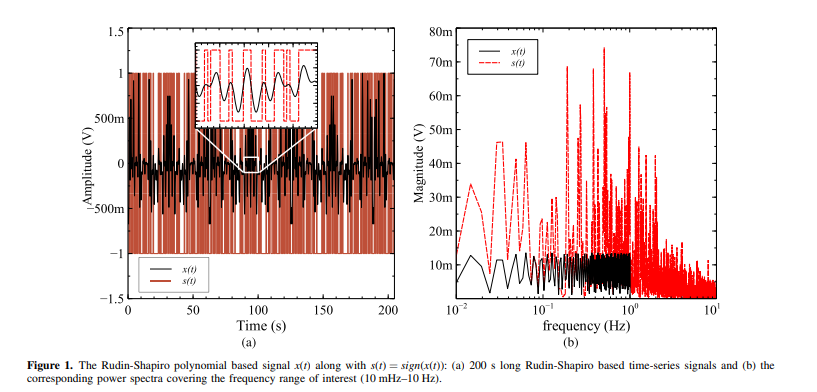
Electrochemical Impedance Spectroscopy (EIS) has become an increasingly important diagnostic and monitoring tool in many industries. An obstacle that arises when employing EIS in low and ultra low sub-Hz frequencies is the long measurement time associated with using the conventional frequency-sweep method. One possible solution to this problem is to use wide-band signals that cover at once the entire frequency range of interest. In this work, we explore and validate the use of such a signal obtained from the Rudin-Shapiro polynomial over the frequency range 10 mHz to 10 Hz. The proposed signal
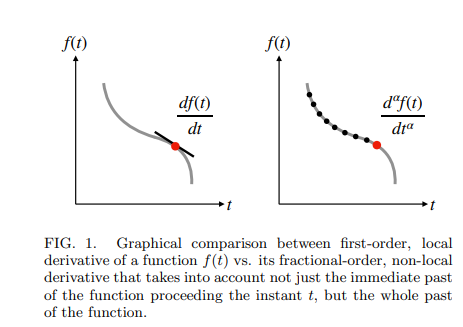
Electrochemical capacitors are a class of energy devices in which complex mechanisms of accumulation and dissipation of electric energy take place when connected to a charging or discharging power system. Reliably modeling their frequency-domain and time-domain behaviors is crucial for their proper design and integration in engineering applications, knowing that electrochemical capacitors in general exhibit anomalous tendency that cannot be adequately captured with the traditional RC-based models. In this study, we first review some of the widely used fractional-order models for the